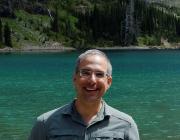Citation:
| physreve.108.024201.pdf | 1.08 MB |
Abstract:
A Boltzmann transport equation approach is developed for reaction-diffusion systems which incorporates phonon transport in addition to the traditional approach. Scattering processes up to second order are taken into account. Two forces emerge from this analysis when a spatial gradient exists, one force on reactants and products, the other force on phonons. The forces are equal and opposite and have the tendency for separation of the phonons away from the reactants and products. These forces are capable of creating the types of instabilities that can lead to the formation of Turing patterns.
The existence of these forces allows for exergonic conversion where not all of the released energy from reactions and diffusion becomes heat. When applied to homogeneous catalysis, one finds that reactants and products are pushed toward regions of greater catalytic activity. In the realm of high-energy explosions, calculations show that reactants and products can be accelerated laterally to the direction of a TNT reaction front up to speeds near 1000 m/s. This acceleration is in opposition to diffusion and represents active transport. Calculations also show that active transport observed in biological systems such as bacteria, mitochondria, and chloroplasts may be explained by this second-order transport theory. Using reasonable values for key parameters, calculations show that up to one-third of the available chemical energy can be converted toward pumping protons uphill to a potential of 50 mV.


